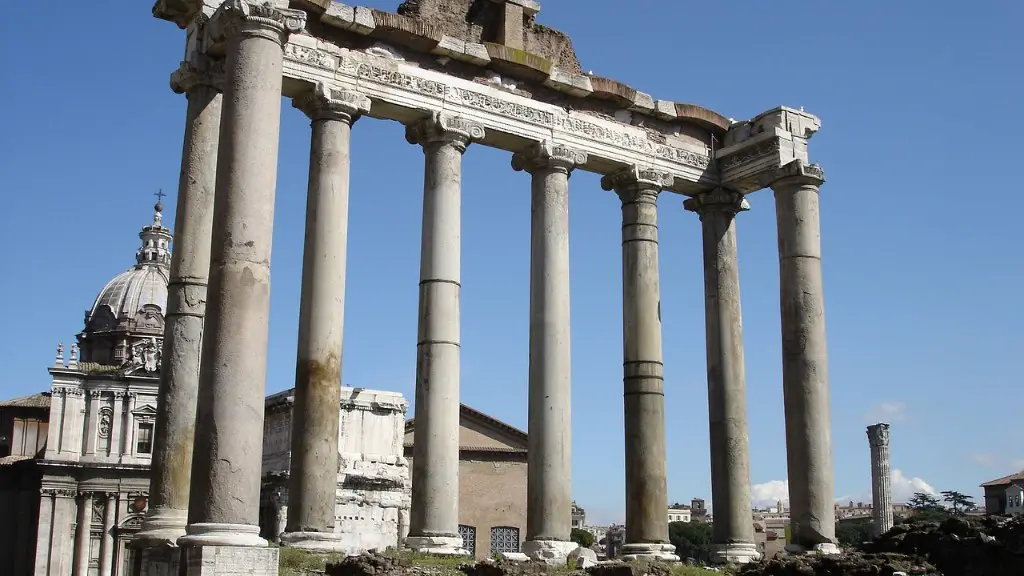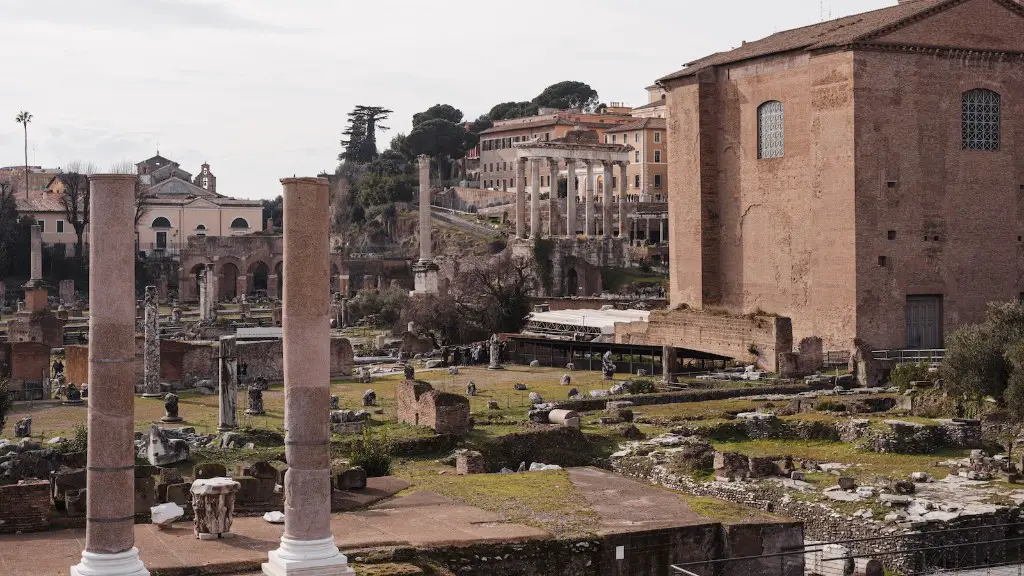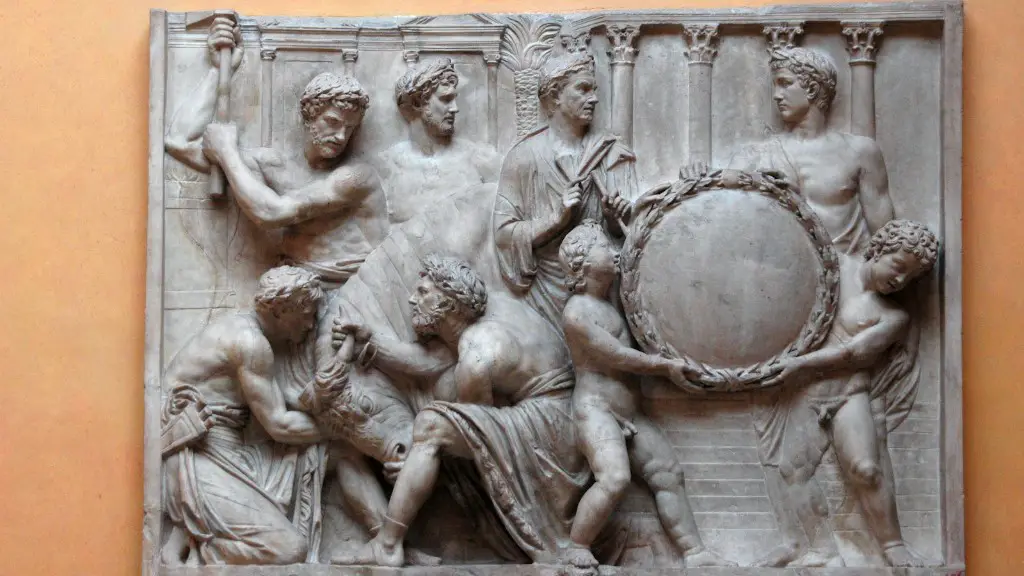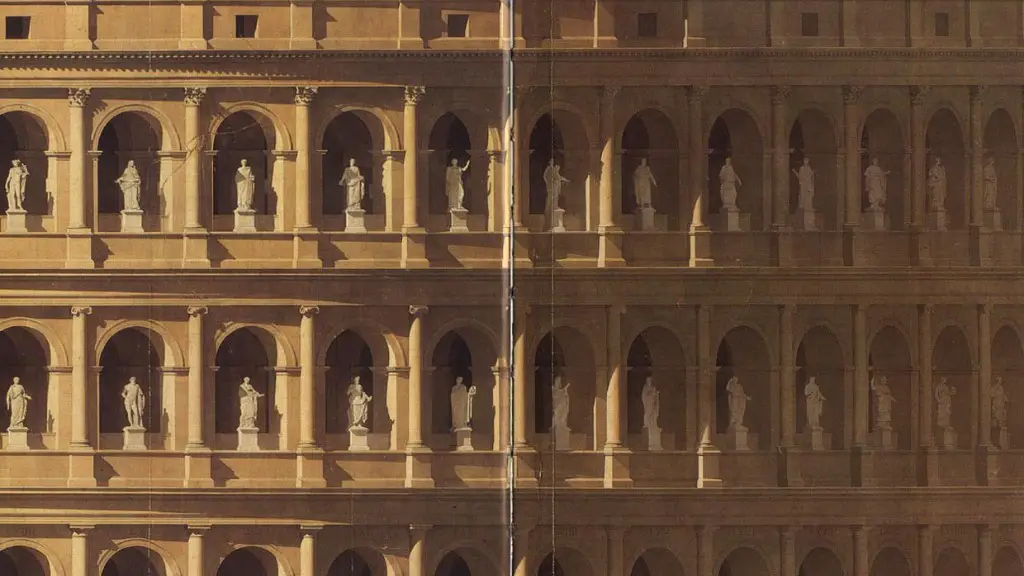The Coliseum, or Flavian Amphitheatre, is an elliptical amphitheatre in the centre of the city of Rome, Italy. Built of concrete and stone, it is the largest amphitheatre ever built and is considered one of the greatest works of Roman architecture and engineering. The Coliseum is a symbol of Imperial Rome and is one of Rome’s most popular tourist attractions. It was used for gladiatorial contests and public spectacles such as mock sea battles, animal hunts, executions, re-enactments of famous battles, and dramas based on Classical mythology. It was also used for public meetings, processions, and occasionally as a place of execution.
The Colosseum was used for gladiatorial contests, public executions, and other public entertainment events.
What was the Colosseum used for besides fighting?
The Colosseum was not just used for Gladiator contests, but also for executions, dramas based on Classical mythology, mock battles, and re-enactments of famous battles. This made the Colosseum a very popular and well-known structure in ancient Rome.
The Colosseum was one of the most popular arenas in the Roman Empire. It remained active for over 500 years, hosting a variety of events such as gladiator fights, animal hunts, and public executions. The last recorded games in history were celebrated in the 6th century, after which the Colosseum fell into disrepair.
Why did gladiators stop fighting in the Colosseum
The gladiatorial games were officially banned by Constantine in 325 CE. Constantine, considered the first “Christian” emperor, banned the games on the vague grounds that they had no place “in a time of civil and domestic peace” (Cod Theod 1512.
The Colosseum is a stunning example of ancient Roman architecture and one of the most recognizable buildings in the world. While it is most famous for being a place of death and bloodshed, for many Romans it was also a place of amusement and distraction from the difficulties of their everyday lives. As such, it is a powerful symbol of the Roman Empire and its impact on the world.
Who destroyed the Colosseum in Rome?
The Colosseum, one of Rome’s most iconic landmarks, has undergone many changes over the centuries. After the fall of the Western Roman Empire, the Colosseum began to deteriorate. A series of earthquakes during the fifth century CE damaged the structure, and it also suffered from neglect. By the 20th century, nearly two-thirds of the original building had been destroyed. However, the Colosseum has been through a lot of restoration in recent years and is now a popular tourist destination.
The Colosseum is a popular tourist destination in Rome, Italy. It is a large amphitheater that was built in the first century AD. The Colosseum is famous for its architecture and its role in the Roman Empire. The Colosseum is also famous for its iron clamps. The iron clamps were used to hold the stones together. The iron clamps were removed during the centuries and the holes were created.
What are 5 facts about the Colosseum?
1. The Colosseum is over 1,900 years old.
2. Gladiatorial shows took place at the Colosseum.
3. The Colosseum is famous for being the world’s largest amphitheater.
4. You can see a section of the arena that was once underground.
5. It’s one of the New 7 Wonders of the World.
The “sport” of gladiator fighting was appallingly brutal, and many gladiators faced the arena with fear and trembling. This was especially true for those who were assigned to square off against wild animals. On one occasion, 20 gladiators committed group suicide, killing one another one by one, rather than enter the arena. It is truly shocking that such a barbaric practice was once considered entertainment.
Who was the most famous gladiator
Spartacus was an incredibly brave and determined fighter, leading a huge rebellion against his captors. He was subjected to brutal training as a gladiator, but he and 78 others still managed to revolt using only kitchen knives. This just goes to show how determined Spartacus was to gain freedom, and how powerful he was as a fighter. He remains one of the most famous Roman gladiators to this day.
The life of a gladiator was usually brutal and short. Most only lived to their mid-20s, and historians have estimated that somewhere between one in five or one in 10 bouts left one of its participants dead. Nevertheless, the life of a gladiator was usually brutal and short.
Why is the Colosseum important to Roman culture?
The Colosseum was a state-of-the-art amphitheatre when it was built and its design and architecture served as a tool for Roman Emperors to exert political control. The amphitheatre could seat up to 50,000 people and was used for entertainment, religious ceremonies and public executions. The Colosseum was a symbol of Roman power and influence and served as a tool to control the population.
As many as 400,000 people are believed to have died in the Colosseum over the 350 or so years that it was used for human bloodsports and spectacles. This is an incredible amount of death, and it is impossible to know for certain how many people actually perished. However, the Colosseum was a huge arena and could have easily accommodated that many people.
Why is only half the Colosseum left
The Roman Empire was one of the most powerful empires in the world for many centuries. However, the empire began to decline in the early 200s AD. One contributing factor to this decline was a fire that occurred in 217 AD, which caused significant damage to the amphitheatre in the empire’s capital city of Rome. This damage was not fully repaired until 320 AD, and in the meantime, the structure of the amphitheatre was weakened. This fire was just one of many factors that contributed to the decline of the Roman Empire.
The Colosseum is one of the most popular tourist attractions in Rome, but it is also a reminder of the bloody history of the Roman Empire. The Colosseum was built as a place for public entertainment, including gladiator fights. These fights were often deadly, and it is estimated that around 400,000 gladiators were killed in the Colosseum.
Is there a toilet inside the Colosseum?
The Colosseum in Rome was not only a great feat of architecture and engineering, but it also boasted public toilets! These toilets consisted of rows of seats with holes in them, with a drain of flowing water beneath carrying everything off into a system of sewers. This system eventually led to a large drain that circled the Colosseum.
TheHypogeum was divided into two levels which comprised of a series of connected corridors and tunnels that lead into and out of the Colosseum. It was likely used as a holding area for wild animals, gladiators, and slaves before and during games and other entertainment events.
Final Words
The Colosseum was used for a variety of purposes in Ancient Rome, including public spectacles such as gladiatorial combats, animal hunts, and executions; and private functions such as re-enactments of famous battles, mock sea battles, and plays.
The Colosseum was used for a variety of purposes in Ancient Rome, including public executions, animal hunts, and gladiator fights. It was a space where people from all walks of life could come together and enjoy some entertainment. The Colosseum remains an impressive and awe-inspiring structure even today, a reminder of the power and grandeur of the Roman Empire.




